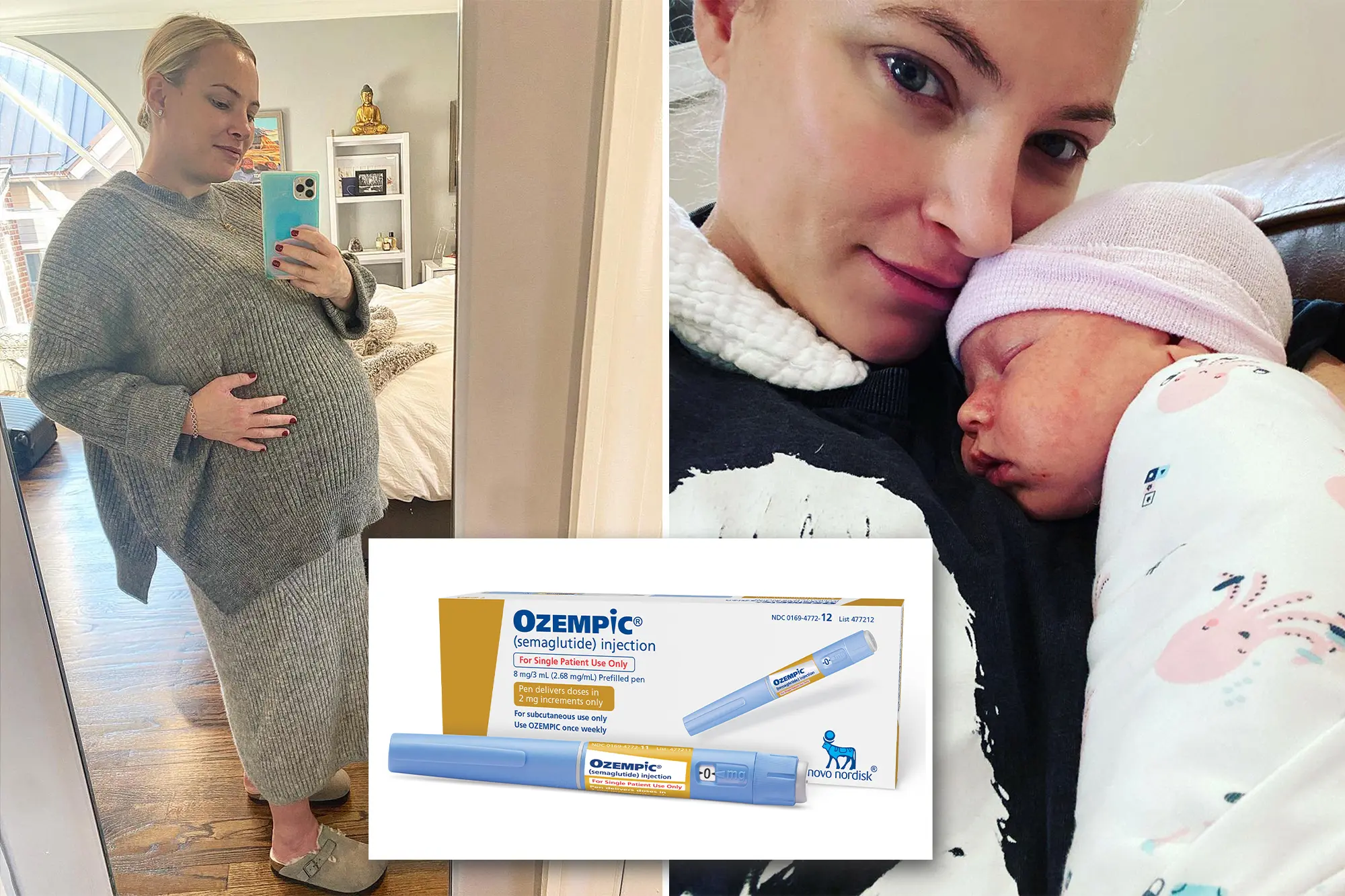Hello Forecasters,
Welcome back to the Inflection Point.
It seems like everyone in Hollywood is taking weight loss drugs these days.
Oscar’s host, Jimmy Kimmel, said,
"When I look around at this room, I can't help but wonder, 'Is Ozempic right for me?'"
He was only half-kidding.
But you know who’s not laughing?
- McDonald's
- Walmart
- Nestle
Goldman Sachs predicts the global *weight loss drug market will reach $100 billion around 2030.
*For ease, know that I’ll be referring to ‘weight loss drugs’ as
- Ozempic, Mounjaro
- Semaglutide
- GLP-1
They are the same thing.
So, will lower appetites result in lower sales?
Apparently yes.
- Morgan Stanley estimates that 7% of America (24 million people) will be on weight loss drugs by 2035.
- According to Bloomberg, Ozempic users cut grocery spending by up to 9%.
- It’s estimated that the overall consumption of carbonated soft drinks and salty snacks may fall up to 3% in the next decade.

Nestle and General Mills are preparing.
How?
A new line of low-cost, high-protein shakes and bars that supplement vitamins and minerals and reduce the loss of muscle mass.
While these products may be short-term Ozempic-inspired innovations, Nestle also sees a significant long-term demographic opportunity.
Rapidly aging global populations, diet fads, and food inflation prices drive new business strategies.
According to the U.N., the number of people 65 and older will more than double by 2050, rising from 761 million to 1.6 billion.
In a world where birth rates are plummeting, and people are living longer, Nestle has decided to shut down one of its baby formula factories in Ireland.
The specific reason?
Once a huge baby market for Nestle, China has gone from 18 million births in 2016 to 9 million in 2022. Instead, it’s turning to ‘healthy aging solutions’ that target older, health-conscious consumers.
As these drugs become cheaper and more widely available, we can expect more brands—from fitness companies to restaurants—to begin introducing Ozempic-inspired business strategies.
Luxury gyms like Equinox are acquiring weight loss clinics prescribing GLP-1 drugs as Baby Boomers age out of ‘typical gym-going populations’ – Weight Watchers is doing the same.
Beauty brands are seeing medspa trends respond to ‘Ozempic face’ and ‘Ozempic butt’

Experts predict that consumers will look to bio-stimulating injections to address the issue of sagging skin. The NWO.ai signal comparison below shows that as consumer conversation for ‘Ozempic Face’ spiked in early 2023, the signal increases for Sculptra and Rasiesse injections soon followed and are expected to peak in late 2024.
Even Elon is on weight loss injections.

So, what other CPG opportunities are tied to the Ozempic trend?
We warn you, it’s not pretty.
Consumption of high-fat, fried, and greasy foods makes weight loss drug symptoms like nausea, constipation, and diarrhea worse.
- According to a report from America’s Poison Centers, at least 2,941 people reported overdose exposures to semaglutide.
- Novo Nordisk, the maker of Ozempic, is in an ongoing lawsuit for failing to warn users about the potential for gastroparesis and even death.
- Gastroparesis, also known as ‘forever diarrhea,’ is a chronic condition where the nerves and muscles of the stomach are severely weakened; gastroparesis can’t be cured and requires a lifetime of medical intervention.
In January 2023, we saw a sharp spike in consumer conversation around ‘Ozempic,’ marking its transition from “diabetes medication” into “miracle weight loss drug.” Consumer interest in Ozempic was followed by spikes in conversation around Gastroparesis.
This data is consistent with the signal for anti-nausea and diarrhea relief. Consumer health brands Imodium and Zofran stand to gain from the increased use of weight loss drugs and create greater opportunities for VMS brands playing in the probiotic and gut health space.
Probiotic drinks are expected to peak in March 2025.
Could Coca-Cola’s Asian fiber drink from 2017 make a comeback? Or are they just going to acquire Poppi?

We’ll have to wait and see.
The potential for ‘forever diarrhea’ is apparently a small price to pay for fertility, curbed alcohol cravings, and reduced thoughts of suicide.
Enter the rise of ‘Ozempic babies.’
The consumer interest in ‘Ozempic babies’ has increased by 9845% over the last three years, a cause for worry in some and a miracle for others.
The NWO.ai inflection point news summary describes numerous reports of women becoming pregnant unexpectedly. This is happening for two main reasons.
- Because weight loss drugs slow the emptying of the stomach, they can cause oral birth control to lose effectiveness, essentially preventing synthetic hormones from getting to where they need to be on time.
- Excess fat often leads to excess hormones that cause hormonal imbalances, resulting in infertility. Weight loss drugs hyperaccelerate the reversal of this process, which is why some doctors are prescribing women GLP-1 drugs before IVF treatments.
Women are flooding social media to share how, after years of fertility issues, they are able to conceive in as little as two weeks after starting drugs like Manjaro.

Does semaglutide cause suicidal thoughts?
According to one Nature Medicine study, it actually lowers them.
A nine-month investigation by the European Medicine Agency was conducted after a small group of people claimed that semaglutide use resulted in suicidal thoughts. Last Friday, the EU agency concluded the same as the FDA in January: it did not.
*Compared to other weight loss and diabetes medications, those prescribed semaglutide were up to 73% less likely to report suicidal thoughts.
If GLP-1s cut food cravings, can they cut alcohol, nicotine, and opioid cravings, too?
Yes.
Let’s break it down.
Semaglutide, or GLP-1 drugs, is a class of medications that mimic a hormone in the gut. These drugs trigger insulin release from the pancreas to lower blood sugar and satisfy people after eating.
They also work on the brain, specifically the region that releases dopamine. Turns out, the same part of the brain that regulates overeating is the same one responsible for the development of addiction. Food and substances both trigger dopamine, which is why we reach for another french fry or second glass of wine.
GLP-1 drugs reduce the release of dopamine, which can immediately alter compulsive behaviors such as:
- Opioids
- Nicotine
- Shopping
- Gambling
- Psychostimulants
While these side effects were unexpected surprises for many users, those who study GLP-1 drugs have seen these experiences play out in mice for years. Researchers say that there is a 50% reduction in alcohol consumption for alcohol-addicted rats.
Human reports of curbed addictions are mainly anecdotal, with many scientists saying randomized control trials are still years away.
And while some doctors have prescribed patients GLP-1s for alcohol addiction, many warn that it does not have the same effect on those without diabetes.
So what is proven?
The FDA has confirmed that GLP-1 drugs lower the risk of major cardiac events (stroke, heart attack) by up to 20%
- According to the World Health Organization, 32% of global deaths (17.9 million people) are from heart-related diseases.
- Diabetes has increased threefold in America over the past 3 years, from 18 million to over 62 million today (this number is assumed to be much higher since ~40% of people do not know that have diabetes and are still undiagnosed).
- Growing rates of obesity (especially in children), poor nutrition, and a lack of physical activity explain the diabetes increase; America has the highest rates of obesity and physical inactivity in the world.
- ~10.5% (or 29.5 million) of Americans struggle with alcohol use. Alcohol-related deaths are responsible for around 88,000 deaths annually and are the 5th leading cause of preventable death.
- According to the CDC, among women 15-49, about 1 in 5 (19%) are unable to get pregnant after one year of trying.
If GLP-1 drugs can positively affect these issues, all while getting the glitz attention of celebrities and making the average housewife's body dreams come true, there is little doubt that this industry will continue to explode.
Despite supply chain issues, inflation prices, and many insurance companies denying coverage, consumers are eager to foot the $1,000-a-month bill or look to off-brand semaglutide alternatives online.
Either way, GLP-1s are here to stay.
That’s all we’ve got for now.
Thanks for spending time with us on this week’s Inflection Point.
We’ll see you next time.